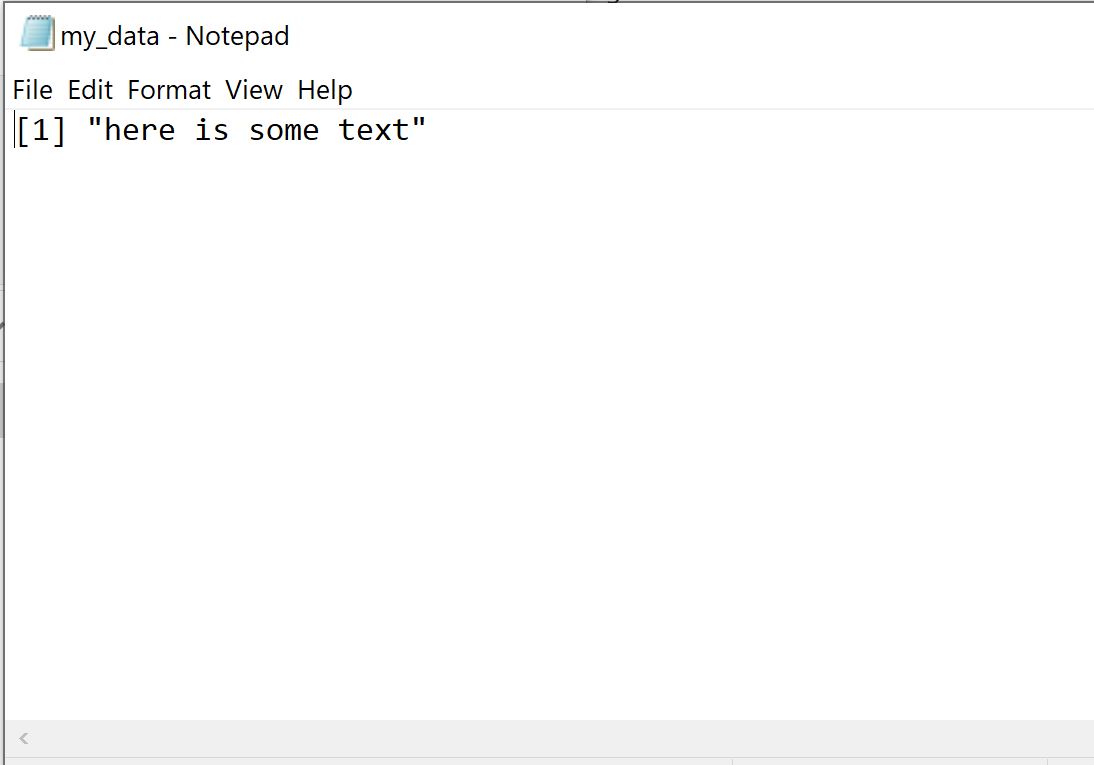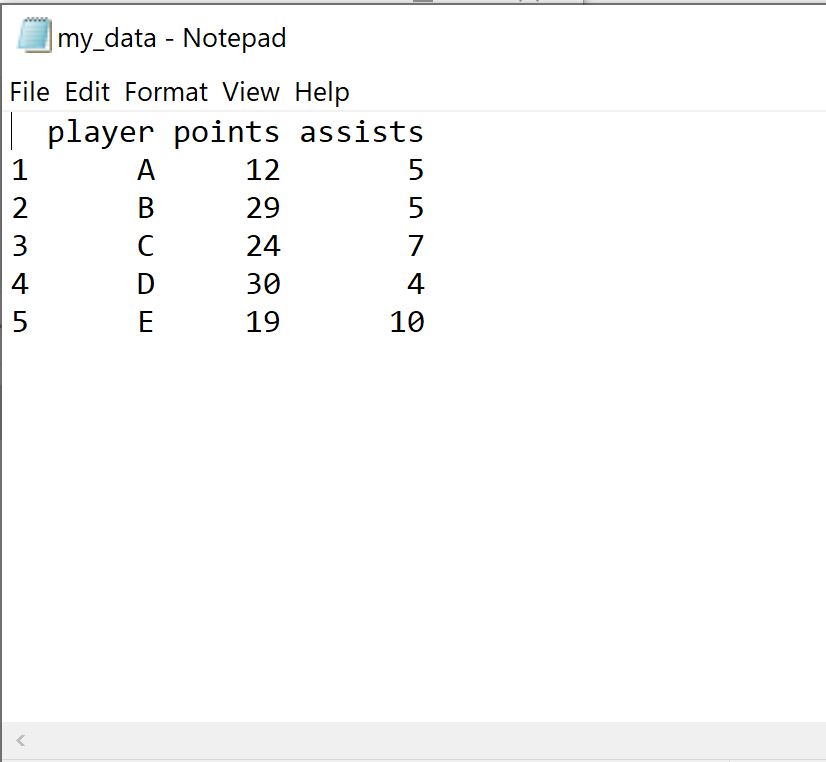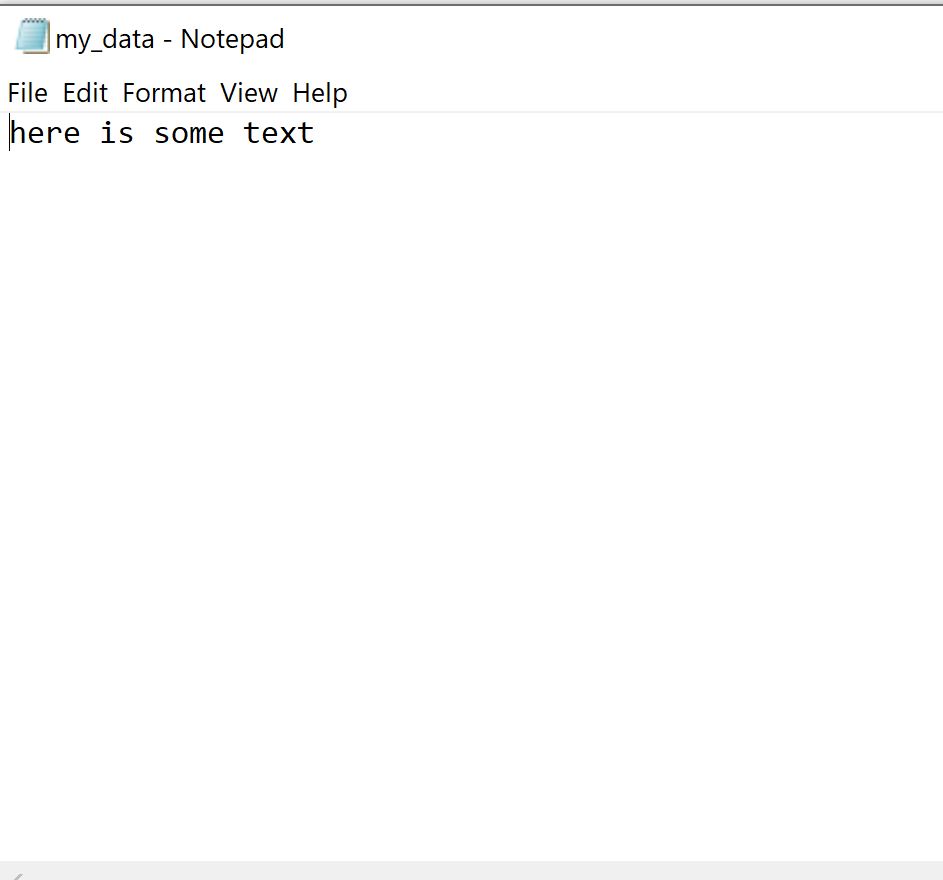R の出力をテキスト ファイルに保存する方法 (例あり)
R 出力をテキスト ファイルに保存するには、次の 2 つの一般的な方法があります。
方法 1: Sink() 関数を使用する
#define file name
sink(" my_data.txt ")
#write this string to file
"here is some text"
#close the external connection
sink()
方法 2: cat() 関数を使用する
#write string to file
cat(" here is some text ", file = " my_data.txt ")
次の例は、各メソッドを実際に使用する方法を示しています。
例 1: Sink() を使用して R 出力をテキスト ファイルに保存する
次のSink()関数を使用して、文字列をテキスト ファイルにエクスポートできます。
#define file name
sink(" my_data.txt ")
#write this string to file
"here is some text"
#close the external connection
sink()
次に、現在の作業ディレクトリに移動して、テキスト ファイルを開きます。

ファイルには指定した文字列が含まれています。
cat()関数を使用して、データのブロックなどのより複雑なものをテキスト ファイルにエクスポートすることもできます。
#define file name
sink(" my_data.txt ")
#define data frame to write to file
df <- data. frame (player=c('A', 'B', 'C', 'D', 'E'),
dots=c(12, 29, 24, 30, 19),
assists=c(5, 5, 7, 4, 10))
print (df)
#close the external connection
sink()
次に、現在の作業ディレクトリに移動して、テキスト ファイルを開きます。

このファイルには、作成したデータ フレームが含まれています。
例 2: cat() を使用して R 出力をテキスト ファイルに保存する
次のcat()関数を使用して、文字列をテキスト ファイルに保存できます。
#save string to text file
cat(" here is some text ", file = " my_data.txt ")
次に、現在の作業ディレクトリに移動して、テキスト ファイルを開きます。

テキスト ファイルには、指定した文字列が含まれています。
Sink () 関数とは異なり、cat( )関数にはテキスト ファイルに R コンソールの行番号が含まれないことに注意してください。
ニーズに合わせた機能をぜひご利用ください。
追加リソース
次のチュートリアルでは、R で他の一般的なタスクを実行する方法について説明します。
R でデータ フレームを Excel ファイルにエクスポートする方法
R でデータフレームを CSV ファイルにエクスポートする方法
R でリストをファイルにエクスポートする方法